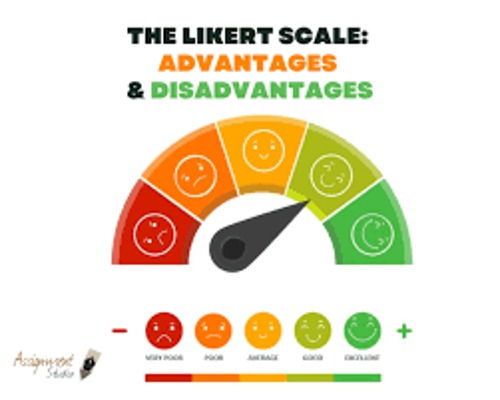Mastering Likert scales, a widely used method for measuring attitudes and opinions, is essential for researchers and professionals in various fields. A Likert scale typically consists of a series of statements or items to which participants respond by indicating their level of agreement or disagreement. To become proficient at using Likert scales, it’s crucial to understand the nuances of phrasing statements to elicit accurate responses from participants.
Additionally, knowing how to analyze and interpret Likert scale data is vital for drawing valid conclusions from survey results. As Likert scales offer a range of response options, such as strongly agree, agree, neutral, disagree, and strongly disagree, mastering the proper use of these options can lead to more insightful and meaningful data. Moreover, considering factors like question order, potential bias, and optimal scale length can elevate one’s mastery of Likert scales to achieve reliable and valid measurements.
Importance and Usage of Likert Scales in Research

The importance of Likert scales lies in their ability to provide structured and standardized measurements of subjective phenomena. Researchers can quantify and compare responses across different groups or periods using these scales. Moreover, Likert scales are versatile and can be applied in various fields such as psychology, sociology, marketing, and health sciences.
In research, Likert scales assist in understanding consumer behaviour, evaluating employee satisfaction, measuring the effectiveness of interventions, and assessing public opinion on social issues. These scales also allow for statistical analyses like factor analysis and regression to uncover underlying patterns within the data.
Overall, Likert scales offer an efficient way to gather valuable insights into human attitudes and perceptions with high reliability and validity.
Seven-Point Likert Scale
The Seven-Point Likert Scale is a commonly used measurement tool in social science research to quantify attitudes and opinions. This scale typically ranges from strongly disagree to strongly agree, with additional options for neutral or middle-ground responses.
The Likert scale allows for nuanced and detailed responses, giving researchers more insightful data than straightforward yes/no questions. It enables the assessment of the intensity of attitudes, allowing for a more accurate representation of individuals’ viewpoints. The scale’s flexibility also permits adaptations to suit specific research objectives and target populations.
Researchers should ensure that the Likert scale items are unambiguous to obtain reliable and valid data. Additionally, using an odd number of points (e.g., 5 or 7) helps prevent respondents from choosing a neutral option as a default response. By analyzing responses on the Likert scale, researchers can gain valuable insights into participants’ perceptions, preferences, and behaviors.
Advantages and Disadvantages of Using Likert Scales

Using Likert scales in research offers several advantages, such as providing a simple and easy-to-understand method for respondents to express their opinions or attitudes. Additionally, Likert scales allow for quantitative analysis of qualitative data by assigning numerical values to responses, making comparing and interpreting results easier.
Furthermore, Likert scales offer the flexibility to include a wide range of response options, enabling researchers to capture nuanced variations in attitudes or perceptions. On the other hand, some disadvantages of using the Likert scale include the potential for response or acquiescence bias, where respondents may tend to agree with statements without considering them carefully.
Likewise, Likert scales can sometimes oversimplify complex attitudes or opinions and may need to capture the richness and depth of respondents’ perspectives fully. Additionally, the interpretation of intermediate scale points can be subjective, leading to potential inconsistencies in data analysis.
Balancing the Positive and Negative Response Options
When designing a survey with a Likert scale, it’s essential to balance the positive and negative response options. This means providing an equal number of positive and negative statements or scales to ensure unbiased feedback. By doing so, respondents are more likely to offer balanced and thoughtful responses rather than being swayed towards one extreme. For example, if there are six positive statements, there should also be six negative ones. This strategy helps to avoid response bias and provides a clearer picture of the respondent’s true feelings or opinions on the topic. Balancing the positive and negative response options is crucial in obtaining accurate and valuable survey data utilizing Likert scales.
Applying the Likert Scale in Observational Studies
Researchers use the Likert scale to capture the nuances and variability in people’s responses, providing more detailed insights than simple yes/no questions. This method allows for greater granularity in data analysis and interpretation.
In an observational study using the Likert scale, researchers can gather information about participants’ perceptions and experiences without imposing predefined categories or assumptions. This flexibility can be precious when studying complex phenomena such as human behaviour or social dynamics. By applying the Likert scale, researchers can gain a deeper understanding of the range and distribution of responses within their sample, enabling them to identify trends and patterns that may not be apparent with more limited response options.
The Likert scale provides a way to quantify subjective aspects of observation without sacrificing the richness of qualitative data. Its widespread use across disciplines makes it a versatile and reliable tool for gathering valuable insights in diverse research contexts.
What is the Likert rating scale?
The Likert rating scale is a commonly used psychometric tool for measuring attitudes, opinions, and perceptions. It typically consists of a series of statements to which respondents express their level of agreement using a multiple-point scale, such as strongly agree, agree, neutral, disagree, and strongly disagree. The responses are then quantified and analyzed to derive valuable insight into an individual or group’s stance on various topics.
This scale enables researchers to gather quantitative data about subjective experiences, making it highly versatile in fields like psychology, sociology, and market research. Likert scales allow for the measurement of both positive and negative sentiments, providing a more nuanced understanding of individuals’ perspectives. Furthermore, they can help identify population patterns and trends to inform decision-making processes.
Researchers often use Likert scales in surveys and questionnaires because they facilitate structured data collection while allowing for individual expression. The scale’s flexibility in statement construction and response options makes it suitable for different research contexts. As a result, the Likert rating scale continues to be a fundamental tool in social science research due to its simplicity, reliability, and ability to capture diverse viewpoints.
Why is Likert scale used?
The Likert scale is commonly used in research and surveys to measure attitudes, opinions, and perceptions. It offers a simple and effective way to quantify subjective data, allowing researchers to gain insights into individuals’ thoughts and feelings. This scale typically presents respondents with statements or items relating to the subject under investigation, along with a range of response options from strongly agree to disagree strongly.
Researchers can gather nuanced information about people’s perspectives using the Likert scale rather than just binary yes-or-no answers. This provides a more comprehensive understanding of the participants’ viewpoints, enabling more accurate analysis and interpretation of the data. The scale’s flexibility also allows for customization based on the specific research objectives and target population.
What is the difference between Likert type and Likert scale?
The main difference between the Likert type and the Likert scale is their conceptual meanings. A Likert-type question is generally a single statement to which respondents can express their agreement or disagreement. At the same time, a Likert scale refers to specific response options for such questions.
A Likert-type question usually presents a statement and asks respondents to indicate the extent to which they agree or disagree with it, often using a 5- or 7-point scale. On the other hand, the Likert scale consists of these response options, typically ranging from Strongly Agree to Disagree Strongly.
In summary, while the Likert type represents the nature of the question as being based on a statement with varying levels of agreement, the Likert scale encompasses the range of potential responses provided for that type of question.




